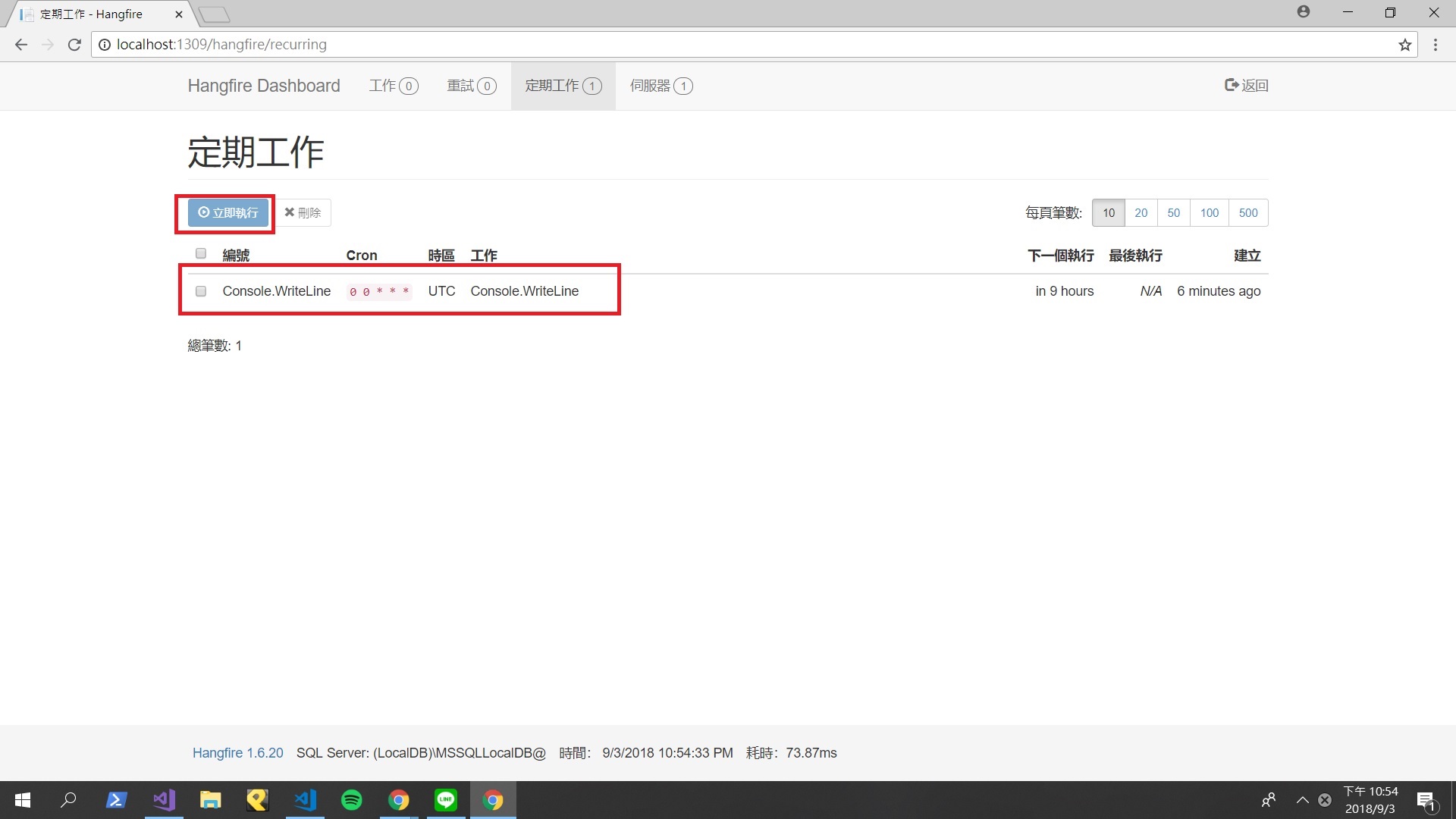
Storing the information of the jobs ensures that jobs are executed as per defined types & also jobs are retried if any exception occurs during the execution of the job. for storing jobs information that prevents applications from losing jobs information in case of pool restarts. Hangfire in ASP.NET Core even supports persistent storage like Microsoft SQL Server, Redis (as part of Hangfire Pro), etc. Hangfire in ASP.NET Core allows the creation of background jobs and even provide monitoring features. Hangfire is a simple to use an open-source library that makes the implementation of background job easy in. Also, this is a design feature and not a functional feature so spending too much time on this will not go down well with all the stakeholders.

We saw the use of background jobs in our application but if we have to build a framework for background jobs creation & monitoring then it would be a complicated task that might require lots of effort. These requests can take an unknown amount of time to completion and keeping the user looking at the wait indicator for that time is not good handling of the request. There might be some web requests which take lots of time for execution like generating a report on successful insertion or sending email/SMS as acknowledgment for the transaction completion. Why or When to Schedule background jobs in.
DELAYED JOB ENQUEUE INSTALL
DELAYED JOB ENQUEUE HOW TO
The example shows how to set up AppSignal with Delayed::Job and Rails.Example applicationsīelow is a list of example apps available to test the Delayed::Job integration with: This will prevent very long queue times from skewing the queue time graphs on. This means that the time from when a job was created until the time it should start is no longer registered as queue time. In PR #297 the start time of the job was used rather than the creation time of the job. In AppSignal for Ruby gem 2.3.0 a change was made to the queue time registration.
DELAYED JOB ENQUEUE UPGRADE
Upgrade to version 2.11.0 of the Ruby gem or newer for improved support. It will report queue times in graphs, queues and priorities if set on the job. The Delayed Job integration is compatible with Active Job. This way the jobs will be grouped correctly again.ĭelayed :: Job. To prevent this from happening, define an appsignal_name method that returns a job name using the ClassName#method_name format. This breaks the grouping AppSignal does for these jobs, resulting in AppSignal reporting many unique variations of incidents for the job, and unusable metrics in graphs. If the display_name method return value does not return a String with the ClassName#method_name format, AppSignal treats each job as a separate entity, creating many Incidents and notifications. This display_name value can interfere with AppSignal's reporting if it is built using dynamic values, such as the arguments given to the job.

Jobs using display_nameĭelayed Job allows any class to define its own display_name. The argument id for the StructJob in the example above is not reported. AppSignal does not read the state of the deserialized object. Job objects are serialized when enqueued and deserialized when processed. Note that this method of enqueuing does not support arguments as a whole object is enqueued.

new ( "id" )) # Reported as "StructJob#perform" Class StructJob < Struct.new ( :id ) def perform # Do stuff end end Delayed :: Job.


 0 kommentar(er)
0 kommentar(er)
